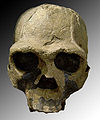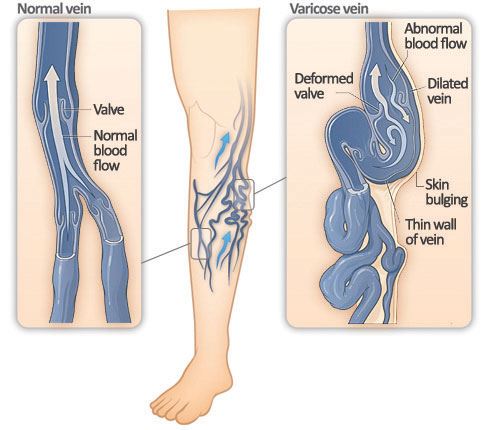First I would like to start off with the disease that has claimed the least amount of lives, the West Nile virus. This virus was originally discovered in 1937 in the West Nile District of Uganda, and it was not til 1999 that it was reported in the United States, New York to be exact. Not to startle anyone, but you may have had it if you live in Africa, Eastern Europe, West Asia, the Middle East, or the United States. What I mean by this is the signs of this virus is very close to those of the flu; fever, headache, body aches, but one thing that sometimes happens with the West Nile virus is the appearance of skin rashes and swollen glands. Serious cases of West Nile virus are 1 in 150. Those serious cases, if not handled, can result in death. In the United States alone, out of over 20,000 who had infection of the brain or spinal cord, more than 1,900 have died according to the CDC. Unlike the other diseases I will discuss, this one originated in birds.
Next up we have dengue fever. Mosquitoes infect widespread areas of Africa, Central and South America, the Caribbean, the Eastern Mediterranean, South and Southeast Asia, and Oceania. This is found throughout the world, but it is more prevalent in these specific areas because it mainly occurs in tropical and subtropical areas. This information of common areas is curious because the “first recognized Dengue epidemics occurred almost simultaneously in Asia, Africa, and North America in the 1780s, shortly after the identification and naming of the disease in 1779.” Even though the first recognized epidemics happened in the late 1700's, the first record of a probable case was in a Chinese medical encyclopedia from the Jin Dynasty, which was from 265 to 420 CE. Some of the symptoms are similar to West Nile, but to add to them we have nausea, vomiting, mild bleeding (nose bleed, bleeding gums) and pain behind the eyes. Now, the origin of dengue fever comes from our extended family, it comes from monkeys. It took one mosquito to take the blood of an infected monkey, and that was it. “Each year, an estimated 390 million dengue infections occur around the world. Of these, 500,000 develop into dengue haemorrhagic fever, a more severe form of the disease, and dengue results in up to 25,000 deaths annually worldwide.”
We now have yellow fever. This disease affects less of the world, being only found in, like dengue fever, in tropical and subtropical areas; but unlike the many places dengue can be found it, yellow fever is found in South America and Africa. Yellow fever may not have a hold on the world, but it does have a hold on our history. What I mean by this is scientists believe yellow fever has been in our lives in Africa since around 3,000 years ago. It was isolated just to Africa for a good 1,400 years, until it was imported to the west during the beginning of slavery. Symptoms of yellow fever have all the symptoms of both West Nile and dengue, but, again, there are more to yellow fever; these add on chills, loss of appetite, and yellowing skin. Unlike West Nile, but just like dengue the origin comes from nonhuman primates. As for the death rate, the World Health Organization estimates “200,000 cases of disease and 30,000 deaths a year occur; the number of officially reported cases is far lower.” It does not seem as that much more than with dengue, but that is 5,000 more lives lost because, once again, the monkey did it.
Lastly we have the biggest bringer of death, malaria. If you were impressed with how long yellow fever has been around, you are going to be flabbergasted by how long malaria has been in the world. This disease predates humans, or mammals. As of 130 million years ago, malaria has been around, but what I mean is the parasites that cause malaria because there are four types that evolved just for humans. These are “P. vivax, P. malariae, P. ovale and P. falciparum; the first three likely either co-evolved with humans or at least first became associated with infecting humans very soon after anatomically modern humans evolved.” To give you an idea how much of a role malaria has played in human history, it is said it helped in the fall of the Roman empire. Now a days malaria is not commonly found in Europe, but “About half of the world's population is at risk. Large areas of Africa and South Asia and parts of Central and South America, the Caribbean, Southeast Asia, the Middle East, and Oceania are considered areas where malaria transmission occurs.” But seeing how the humans living in Africa have been there for most of human history they have a diesease named "sickle-cell anemia (I mentioned it in this blog:
http://anthropologicalconcepts.weebly.com/blog/genetic-drift) which helps few in the population in the resistance to malaria. Now, malaria has all the symptoms I have previously mentioned in the diseases I have spoken of, but to add to those, malaria has profuse sweating, diarrhea, anemia, convulsions, bloody stools, and to top it all off, coma. Unlike the two previous diseases that originated in unnamed monkey species, malaria originated in African gorillas and chimpanzees, which makes sense if it were to co-evolve with us, because both gorillas and chimpanzees are very close to humans in genetic make up. Now I know I said earlier that the people of Africa have a safe because of sickle-cell, but not all have it. Which is why “Malaria kills one child every 30 seconds, about 3000 children every day. Over one million people die from malaria each year, mostly children under five years of age, with 90 per cent of malaria cases occurring in Sub-Saharan Africa.” Compared to the fatalities of the previously mentioned diseases, they have nothing on malaria.
So, why humans? Why are we stuck with the most fatalities? I am sure if one million gorillas or chimpanzees or even 25,000 annually got infected there would be no more. The answer is our brains and what we did with them. What I mean by this is we went from being nomads, to settling down, to farm, to build what we now see as “civilization.” With a good amount of humans in one place, it must have felt like a buffet for the mosquitos. Everything we have to deal with mosquitos is really our fault....or our bodies fault. What I mean by our bodies is the only reason we itch after a mosquito has bitten us is because our body's immune system reacts to the saliva the mosquito is putting into out bodies (their saliva has protein that keeps the blood from clotting). What our body does is it sends out histamine to get rid of the saliva and the histamine is where the bump comes from; and because the skin in that area is not used to being in bump form the nerves are disturbed, thus the itching. And if you have noticed when you scratch the bump gets itchier and bigger it is your nerves response to your action. So, blame our brains and our bodies for the disturbances mosquitos cause us.
I know I did not mention the Zika virus, but the reason I did not is it is relatively new, as in the known existence and fear of it is relatively new (because it has been around since 1947). As mentioned before, it really is not the mosquitos fault, it is all the humanness of humans that are to blame. I think if our evolutionary ancestors, like Homo erectus or Homo habilis, would have had big communities as we have now, there would be no us As in malaria would have been our downfall before there was a chance to become Homo sapiens.
Please feel free to comment on what you thought of the blog, or other physical anthropological subjects you would like me to cover.

















 RSS Feed
RSS Feed
